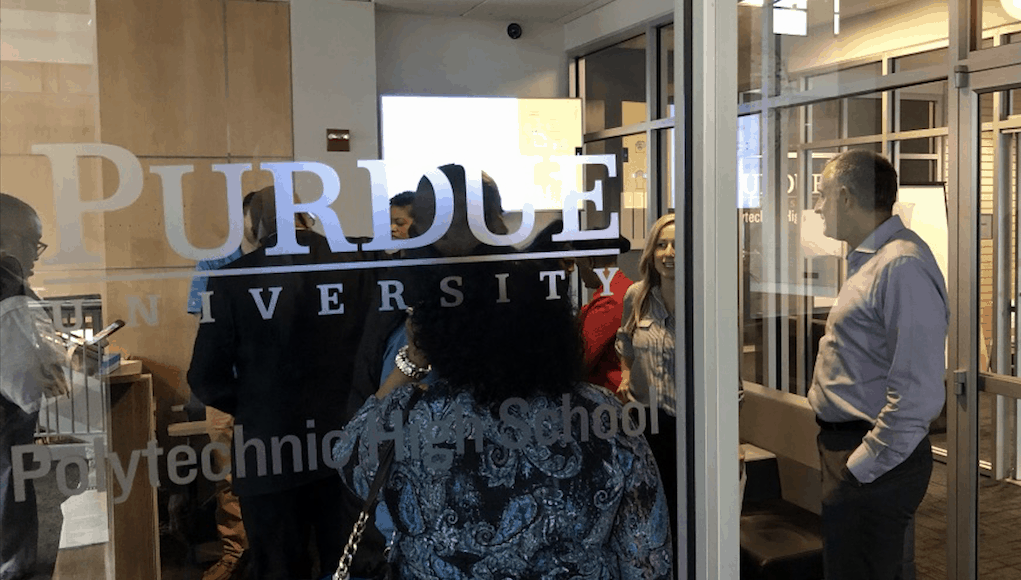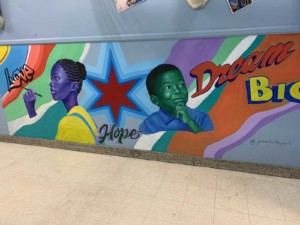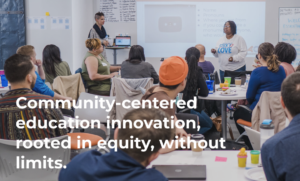Purdue Poly: Driven By Equity, Solving Community Challenges

Over the last five years, only 38 students from underrepresented minority groups who attended Indianapolis Public Schools were accepted and went on to attend Purdue University (an hour drive away).
Purdue Polytechnic High School (@PurduePolyHS) is trying to change that. The two-year-old high school, created in partnership with Purdue, serves 260 kids in two grades. At full enrollment, it will engage about 550 learners in real-world design challenges.
Before launching Poly, Scott Bess (@ScottBessIndy) led an innovative adult education center. During many planning year conversations, Bess heard from experts and community members demanding for a school that stressed hands-on team-based learning where students worked on complex problems with no easy answers.
The school is diverse by design including location and enrollment outreach. Poly is a charter school with an innovative school agreement with Indianapolis Public Schools that allows funding and test scores to flow through IPS and allows Poly to reach out to IPS middle school students.
Purdue Poly spent this year and will spend the next in a downtown shopping mall in a space built out for a college. Their principal Shatoya Ward acknowledges some advantages, like a big food court, but a lot of distractions and space that is less than ideal for design-focused work. They are also taking enrollment for a second location north of town that will open in the fall.
Students work on big challenges introduced by industry partners. For example, Eskenazi Health asked, “How might we help deliver products or services to help all members of our community to lead a healthier life?” Big concepts that might be explored in a related project include cellular structure, heritability, healthy lifestyles, data analysis and statistics, market structures and business models. (More examples below.)

Using design thinking (illustrated below), student teams ideate, prototype, test and pitch their solutions to industry partners.

Core academic content is contextualized to challenge. Teachers work together to combine instruction across disciplines. Student schedules are a list of projects and dojos –workshops for content acquisition and application.
Students have a personal learning coach and an advisory group of 15-17 students with whom they start and end their days.
The Poly gradebook is a list of “I can” statements. Students progress as they demonstrate mastery through classwork, project demonstrations, or outside activities.
In 11th grade, students choose a path that leads to college credits and industry credentials. In 12th grade, students will complete an internship within their chosen path.
Bess anticipates that most students will graduate with a year or more of Purdue credit (an unusual benefit coming from a leading research university). Poly students are on the Purdue campus several times each year and wear Boilermaker gear to school every day.
After opening a second campus, Bess plans to open another half a dozen Purdue-connected STEM schools in Indiana.
For more, see:
- Design Focused High School Builds Tech Talent in Indianapolis
- Getting Started with Personalized Learning
- Learner-Centered Schools in Albemarle County
Stay in-the-know with innovations in learning by signing up for the weekly Smart Update.








0 Comments
Leave a Comment
Your email address will not be published. All fields are required.